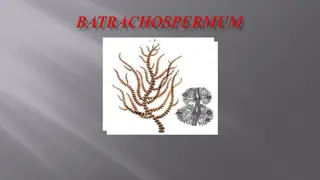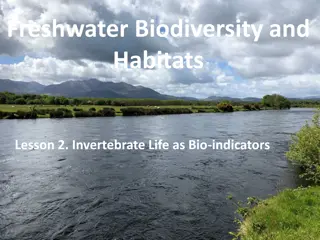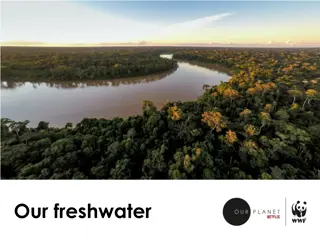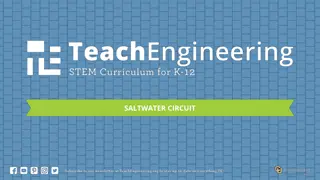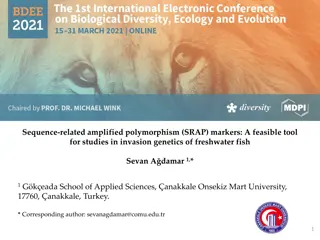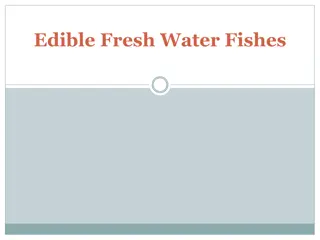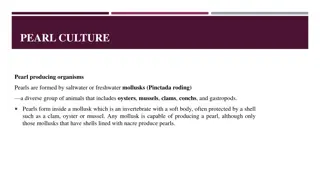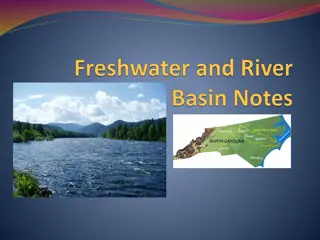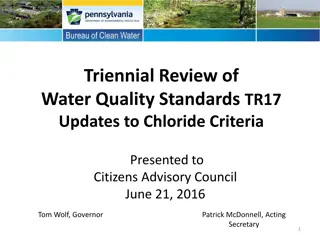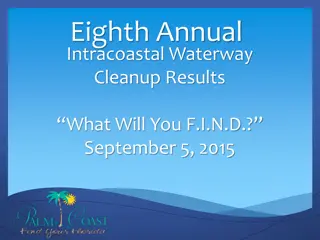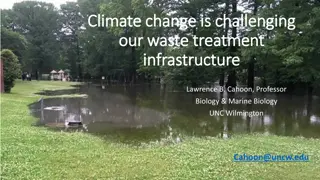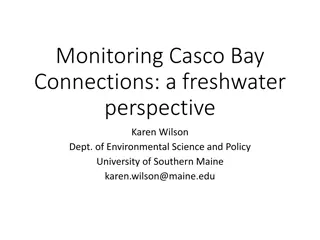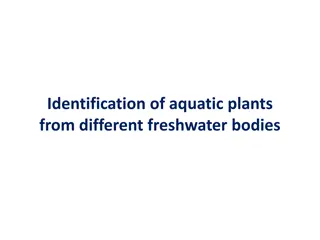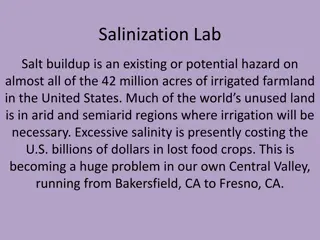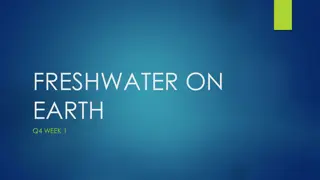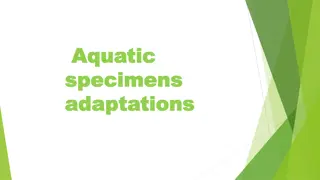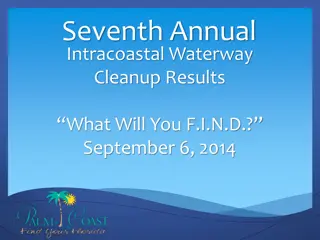
Marine Ecosystems: A Vital Component of Earth's Environment
Marine ecosystems cover a large portion of Earth's surface and play a crucial role in maintaining the planet's water supply and water cycle processes. They are home to diverse marine life forms, including plankton, which are essential for the marine food chain. Estuaries, like Mobile Bay, serve as important transitional areas between freshwater and marine environments. Oceans, the largest sources of saltwater, support a wide range of marine life. In contrast, freshwater ecosystems such as ponds, lakes, rivers, and springs are essential habitats with lower salt concentrations. Understanding the significance of marine and freshwater ecosystems is crucial for the preservation of Earth's biodiversity and environmental balance.
Download Presentation

Please find below an Image/Link to download the presentation.
The content on the website is provided AS IS for your information and personal use only. It may not be sold, licensed, or shared on other websites without obtaining consent from the author. If you encounter any issues during the download, it is possible that the publisher has removed the file from their server.
You are allowed to download the files provided on this website for personal or commercial use, subject to the condition that they are used lawfully. All files are the property of their respective owners.
The content on the website is provided AS IS for your information and personal use only. It may not be sold, licensed, or shared on other websites without obtaining consent from the author.
E N D
Presentation Transcript
Marine Ecosystems Cover almost 75% of Earth s surface and contains 97% of Earth s water supply; and they provide most of the water for Earth s rainfall through the water cycle processes of evaporation and precipitation;
Saltwater-3% concentration Freshwater-1% concentration
Marine Life that is most abundant in Freshwater and marine (salt water environment) is called plankton. There are 2 types.
2 types of plankton 1. phytoplankton microscopic sun absorbing organisms that float near the surface of the water. These organisms make their own food. zooplankton are consumers that feed on phytoplankton. They are small animals that form the feeding chain in oceans, seas and other bodies of water;
Areas of Saltwater Estuaries 1. estuary - an area where freshwater from streams and rivers spills into the ocean or another large body of water; Marine environments begin at estuaries
Mobile Bay is an estuary which empties into the Gulf of Mexico, which deposits its material into the Atlantic Ocean.
freshwater from nearby rivers (Mobile River, Alabama River, and Tombigbee River) is deposited in Mobile Bay Deposition is the process where sediments water, soils and materials lay to rest.
Oceans 1. Worlds largest source of saltwater 2. Four major oceans and one minor ocean 3. Marine life: nekton, plankton & benthos thrive in these area feeding off of plankton & other species of flora & fauna
Freshwater Ecosystems Ponds, Lakes, Rivers, Springs (Aquifers) and Streams Freshwater is less than 1% salt by Concentration
Moving Water Most of the world s supply of freshwater is actually frozen. 99% of the world s freshwater is located at the two polar regions as ice or glaciers.
Moving Water Each stream of water, of melting ice or moving water that joins a larger body of water is called a tributary; tributary a stream that flows into a larger stream or lake load the materials carried by a stream
Moving Water Organisms that live in this moving water must adapt to being swept away by currents just as the plankton and benthos must adapt to tides in the ocean.
Moving Water As rivers grow wider carving its own path in the Earth it slows down and meanders back & forth across the landscape;
Moving Water erosion is the process by which material is transported or removed; (due to moving water from rivers and streams) meander rivers or streams that carve their own path in the landscape oxbow lake rivers or streams that have broken off from its original main river source due to deposition of sediment;
Moving Water delta a fan-shaped place where the sediment from other rivers and small bodies of water deposit material at the mouth of a stream; Moving water ends up join other rivers or streams until it reaches a larger body of water, (Gulf, Sea, or Ocean) watershed area of land drained by a water system (drainage basin- Dog River Watershed)
Abiotic Factors all non-living things in an ecosystem temperature, precipitation, wind, (measurable factors) Biotic Factors all living things in an ecosystem (flora, fauna, fungi)
Ponds, Lakes, Rivers, Springs (Aquifers) and Streams Freshwater is less than 1% salt by Concentration
Most of the worlds supply of freshwater is actually frozen. 99% of the world s freshwater is located at the two polar regions as ice or glaciers.
Still Water Still Water 1. Is different from rivers and streams, there is no current, and no circulation of water. There are no tides or crests;
Ponds and Lakes Ponds & Lakes- have three basic environments 1stzone: Littoral Zone - the zone closest to the edge of the land home to floating leaf plants, , and weeds that grow beneath the water; frogs, fish, snakes and turtles live in this zone.
2ndzone Limnetic Zone zone extends from the littoral zone across the top of the water; phytoplankton are found here, along with a variety of fish species and marine life which rely on photosynthesis to live
3rdZone Profundal Zone this is the deep water zone of a lake or pond; no light reaches the bottom; catfish, worms, fungi and bacteria live here that feed off of the remains of other decaying organisms that sink to the bottom
Swamp & Marshes Florida Everglades

